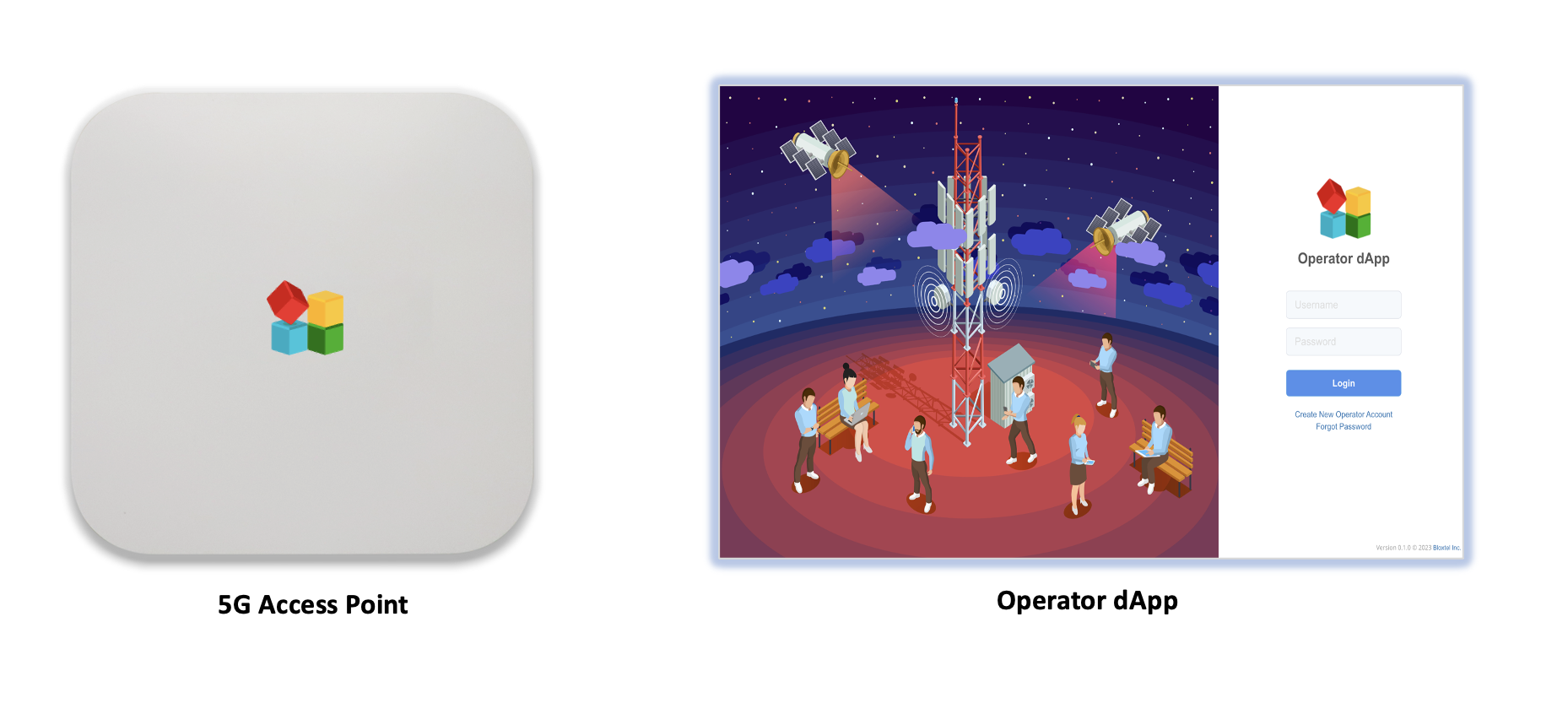Solutions > Indoor Coverage

Why Should your Organization Deploy a private 5G network?
Unlike early deployments of 5G, which initially relied on existing 4G infrastructure (known as Non-Standalone or 5G NSA), 5G Standalone (known also as 5G SA) is designed to operate without any dependence on older network technologies. Deploying a private 5G network for indoor cellular coverage is a strategic move for organizations looking to enhance their connectivity options, improve efficiency, and maintain control over their network infrastructure. Private 5G networks can provide superior indoor cellular coverage compared to traditional Wi-Fi or public cellular networks. This can be especially important in sites where maintaining consistent connectivity is critical for operations.
Private 5G networks are already being deployed in office & residential buildings, factories, schools, hospitals, stadiums, airports, military bases, etc.
There are already over 1,000 sites globally that have deployed private cellular networks (mostly 4G) as part of their digital transformation journey. By 2030, it is projected that there will be over 1,000,000 private networks globally. As of December 2024, the US had over 460,000 active small cells using the shared Citizens Broadband Radio Service (CBRS) 3.5 GHz radio band, operating more specifically in the 3550-3700MHz spectrum.
Making the strategic decision now to invest in your organization's private 5G network helps you ensure a competitive edge in your industry.
5G networks offer lower latency than previous generations, making them ideal for applications that require real-time data transfer. In a manufacturing facility, for instance, low-latency 5G can enable robotics and automation systems to function efficiently.
5G networks provide high bandwidth, allowing for the efficient transfer of large amounts of data. This is beneficial for applications like high-definition video streaming, virtual reality, augmented reality, and IoT devices.
Private 5G networks offer greater control and security over the network infrastructure and data. This is crucial in sectors like healthcare, finance, and manufacturing, where data privacy and security are paramount.
Enterprises can tailor private 5G networks to their specific needs. They can prioritize certain types of traffic, allocate resources as required, and implement security protocols that align with their business requirements.
With 5G, it's possible to create network slices, essentially virtual networks within a single physical network. This allows different departments or applications within an enterprise to have their own dedicated network slices with customized settings.
Private 5G networks can be designed to offer high availability and reliability. This is vital in mission-critical applications, such as those found in healthcare, emergency services, and industrial automation.
Public cellular networks can become congested in urban areas, leading to interference and slower performance. Private 5G networks can provide a dedicated and interference-free environment, ensuring consistent connectivity.
In some industries, such as healthcare and finance, strict regulatory compliance is necessary. Private 5G networks can be configured to meet these compliance requirements while still offering robust connectivity.
5G technology is expected to be the standard for mobile communications for years to come. Deploying a private 5G network can future-proof an enterprise's connectivity infrastructure, ensuring it remains up-to-date with evolving technology.
While the initial setup of a private 5G network can be costly, it can lead to long-term cost savings, especially when compared to the ongoing expenses associated with public cellular data plans.
Key Benefits of Indoor 5G Coverage
Bloxtel stands out in the private 5G market
Many private 5G vendors in the market claim support for 5G, but their solutions are really 5G NSA. There is no clear differentiation in their products, yet they are very expensive and complex to deploy. Compared to Wi-Fi, it makes it very hard to justify your private 5G network acquisition strategy. With the patented dSIM technology, Bloxtel makes your private 5G Standalone look like Wi-Fi on steroids. The choice is simple.
The Competition
Incumbents
They consist of public operators and their vendors. Public operators are not software companies, but just resellers of their vendors' solutions. Their expensive solutions are hard to customize and scale down. This group is not organized to deal with enterprise operations with less than 1,000 SIMs. It does not fit well their business models.
Hyperscalers
They consist of cloud providers who are very entrenched in their everything-in the-cloud mantra which creates huge performance, security and privacy concerns. Their solutions require strong devOps expertise and their SLAs are generally not carrier-grade.
Newcomers
Their solutions are in general just scaled-down versions of products offered by incumbents and/or hyperscalers. Some of them are actually powering the solutions that incumbents or hyperscalers are marketing. The problem is they still use the same traditional centralized approach to telecom with the same deployment complexity.

We have the only 5G Standalone platform that supports asymmetric authentication. Our exceptional features are based on our patented dSIM technology. Our tailored solutions, which are vertifically integrated with our private 5G Standalone platform, were built because we took the time to understand your pain points. You win, we win!
- 70% more secure
- 80% more performant
- 90% more affordable
- 10x more scalable

Deploy your own private 5G network within hours
The white-glove, turnkey serverless platform comes with a guaranteed carrier-grade Service Level Agreement (SLA) of 99.999% of uptime (“5 nines uptime” ) with an average of less than 6 minutes downtime per year (0.86 seconds per day). Bloxtel gives you service credits for any incident.
Private 5G network deployment as simple as configuring a Wi-Fi router.
All you need are Power and Backhaul Connectivity Sources.
- Power Source: Input: 100-240V ~50/60Hz 1.5A Max ; Output: 60.48W
- Backhaul Connectivity Source: Fiber or Ethernet (e.g. CAT6). We provide the cables (e.g. CAT6 cable and/or Fiber-to-CAT6 converter). Depending on your location, we can help with other backhaul connecvitiy options from our fiber, cable and satellite partners.
Site Technicians at your disposal 24/7

Bloxtel assigns Site Technicians to help deploy your private 5G network.
- For the US domestic market: Site Technicians relay installation and operating parameters into an FCC-certified Spectrum Access System (SAS). The SAS enables your 5G access points to use the shared 3550-3700 MHz radio band, known as Citizens Broadband Radio Service (CBRS).
- For international markets: Bloxtel works with your local telecom regulator to evaluate your options. In all markets, we can help set up agreements with public operators to sublicense their unused spectrum in your site.
- For all markets: Bloxtel can help set up agreements with public operators to sublicense their unused spectrum in your site.
It's quick and simple for you to become your own private 5G operator.
To get started, we ship you an Operator Starter Kit that includes a plug-and-play 5G Access Point with a built-in application called Operator dApp.
- 5G Access Point: An AI-native, all-in-one peer-to-peer small cell and network core server. Depending on the model, it can be mounted on desks, poles, walls or ceilings. It hosts Open6GC, Bloxtel's decentralized 5G network core which supports our patented and future-proof PKI-based 5G authentication method (6G AKA). This approach allows the 5G access point to function like a Wi-Fi router with the benefits of 5G. It eliminates the need to deploy and maintain network servers in the cloud.
- Operator dApp: An intelligent, peer-to-peer Web3 application for managing your private 5G network including clustering your 5G access points. It features our proprietary, built-in, AI predictive maintenance system. It also allows remote issuance and management of dSIM®-based subscriptions to your organization’s User Equipment (e.g., Phones, IP Cameras, IoT Devices). The electronic version of the dSIM® can be downloaded from the Operator dApp or via a QR code.

